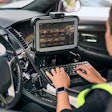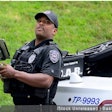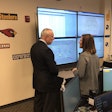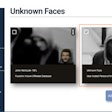The National Institute of Justice (NIJ) has teamed up with law enforcment agencies in four states — North Carolina, Oregon, South Carolina and Virginia — in a pilot project that will allow officers to request out-of-state driver's license photos to match up with the names they're given by suspects.
As patrol officers know all too well, drivers they pull over may not give them a truthful answer about their identity, especially if a bench warrant has been issued. A fugitive who is stopped for a traffic violation, for example, could well offer the name and birth date of a family member who has an out-of-state driver's license and a clean record.
This program allows officers to request the photo, which would then be delivered to their patrol car computer within seconds.
NIJ has been running the pilot project in the four states since 2008. It's the first significant advance in the exchange of driver's license information since 1969, when states began making driver's license information accessible to police officers, according to NIJ.
Driver's license data typically includes an address, date of birth, height, weight and ethnicity. Using a photograph for positive visual identification can sometimes eliminate the need to detain someone simply for identification purposes.
Several states can't yet share fully in the system because of technical, budgetary or policy reasons. For example, some states have laws that specifically restrict sharing Department of Motor Vehicle (DMV) images with anyone outside the state. These laws are typically designed to protect the privacy of state residents.
The International Justice and Public Safety Network, commonly known as Nlets, is coordinating the image-sharing system. Recent technical advances — including the development of XML, a computer programming language that eases the exchange of information on the Internet — have helped to make the exchange of photos possible.
In the future, Nlets hopes to add the ability to exchange other types of official photographs, such as booking and mug-shot photos.














